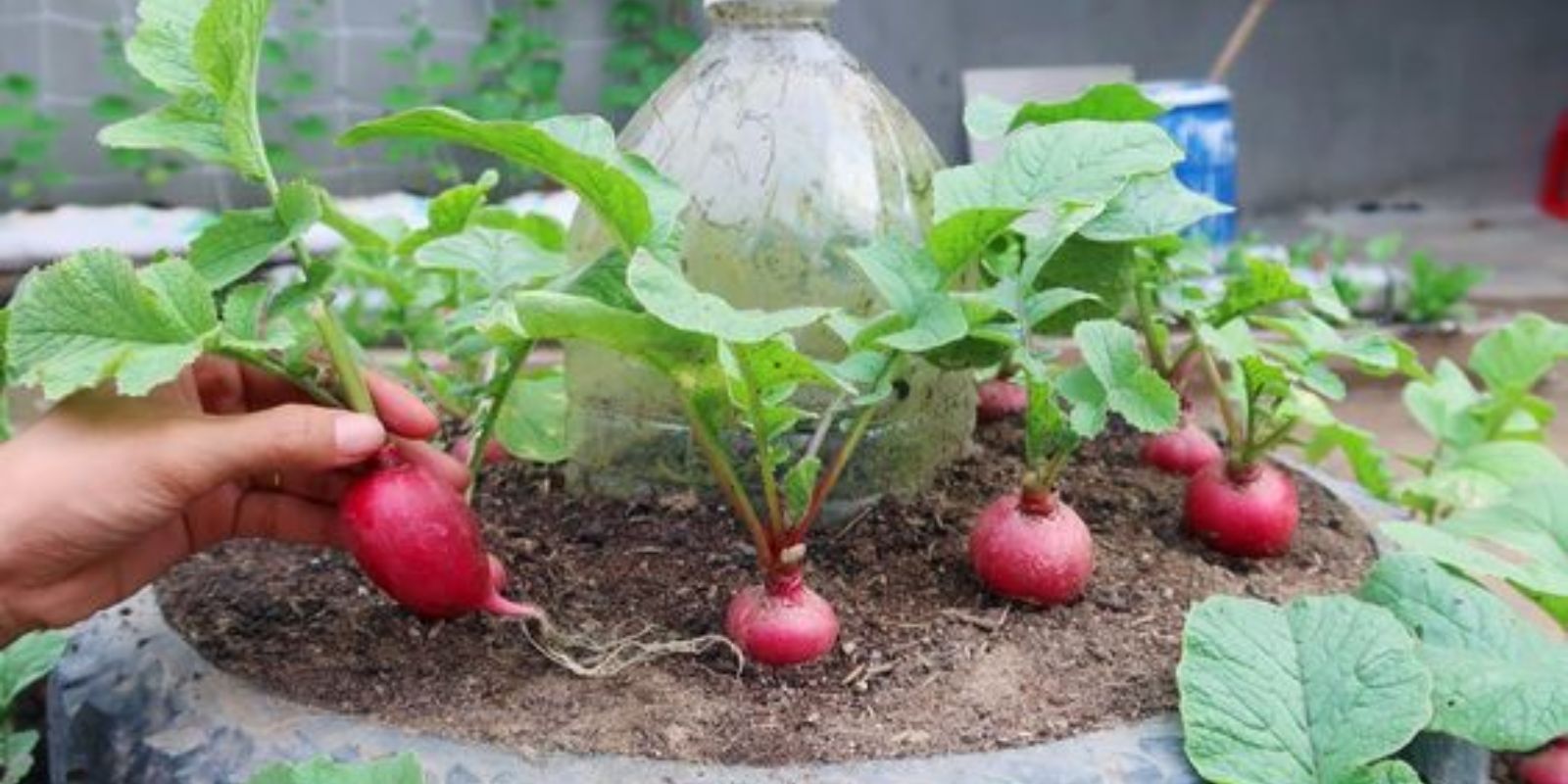Introduction
Gardening enthusiasts are constantly seeking innovative methods to maximize yields and make the most of limited space. One ingenious solution is to recycle old tires to grow radishes. This approach not only repurposes waste materials but also creates a productive growing environment for radishes. Using tires as planters offers several benefits, including increased tuber yield and efficient space utilization. In this article, we’ll explore how to transform old tires into a productive radish garden, providing a step-by-step guide and practical tips to help you get started.
Why Use Tires for Growing Radishes?
Space Efficiency: Tires can be stacked vertically, creating a raised bed that saves space and makes gardening possible in small or urban areas.
Enhanced Drainage: The design of tires allows for excellent drainage, which is crucial for preventing waterlogging and root rot.
Cost-Effective: Using recycled tires reduces the need for expensive garden containers and soil amendments.
Environmental Impact: Repurposing old tires helps reduce waste and gives new life to materials that might otherwise end up in landfills.
Step-by-Step Guide to Growing Radishes in Tires
1. Prepare the Tires
Selection and Cleaning: Choose old tires that are free from chemicals or excessive wear. Clean them thoroughly to remove any dirt or residue. A scrub brush and soapy water work well for this task.
Stacking: Stack the tires to create a raised bed. Depending on the size of your garden, you can stack one or more tires. Ensure they are stable and securely stacked. If you want to enhance drainage, you can cut small holes in the bottom of the tires.
Placement: Position the stacked tires in a sunny location that receives at least 6 hours of sunlight per day. Radishes thrive in full sun, so choose a spot that provides optimal light conditions.
2. Add Soil
Soil Mixture: Fill the tires with a well-balanced soil mixture. Combine equal parts compost, potting soil, and perlite or sand. This mix ensures good drainage and provides the necessary nutrients for radish growth.
Filling the Tires: Start filling the bottom tire with the soil mixture. Pack the soil gently to eliminate large air pockets but avoid compacting it too much. Continue filling the other tires in the stack, leaving about an inch from the top to allow for watering.
Soil Preparation: Mix in some organic fertilizer or compost to enhance soil fertility. Radishes benefit from a nutrient-rich environment, so adding compost helps promote healthy growth.
3. Plant Radish Seeds
Seed Selection: Choose radish varieties that are well-suited for container gardening. Varieties such as Cherry Belle, French Breakfast, or Daikon work well in tires.
Planting Depth and Spacing: Sow radish seeds about ½ inch deep and space them 1 inch apart. Radishes grow quickly, so sowing seeds close together will give you a higher yield. If you’re using multiple tires, you can plant different radish varieties in each one.
Planting Technique: Scatter the seeds evenly across the soil surface or plant them in rows. Cover the seeds with a thin layer of soil and gently pat it down.
Watering: Water the seeds lightly after planting. Keep the soil consistently moist but not soggy. Radishes require regular watering to ensure proper germination and growth.
4. Care and Maintenance
Watering: Maintain consistent moisture in the soil. Radishes need regular watering, especially during dry periods. Water the plants at the base to prevent wetting the foliage, which can lead to fungal issues.
Fertilization: Radishes are relatively low-maintenance, but they will benefit from occasional feeding. Apply a balanced, water-soluble fertilizer or compost tea every few weeks to support healthy growth.
Weeding: Keep the area around the tires free from weeds, which can compete with radishes for nutrients and water. Hand-pulling weeds or using a hoe can help manage weed growth.
Pest Management: Monitor for common pests such as aphids, flea beetles, and root maggots. Use organic pest control methods, such as neem oil or insecticidal soap, to address infestations.
5. Harvesting Radishes
Timing: Radishes grow quickly, typically reaching maturity within 3-4 weeks. Harvest them when they are firm and have reached a desirable size, usually 1-2 inches in diameter.
Harvesting Method: Gently pull the radishes from the soil by grasping the tops. If the radishes are difficult to remove, use a hand trowel to loosen the soil around the roots.
Post-Harvest: After harvesting, rinse the radishes under cool water to remove any soil. Store them in the refrigerator in a plastic bag or container for up to two weeks.
Benefits of Using Tires for Radish Gardening
Increased Yield: The vertical stacking of tires allows for more plants in a smaller area, potentially increasing your radish yield.
Efficient Space Use: This method is perfect for small gardens or urban settings where space is limited.
Sustainability: By recycling tires, you contribute to waste reduction and sustainable gardening practices.
Cost Savings: Using recycled tires eliminates the need for expensive garden beds or containers, making it a cost-effective solution.
Troubleshooting Common Issues
Compacted Soil: If the soil in the tires becomes compacted, it can hinder radish growth. Use a hand fork to gently loosen the soil and improve aeration.
Pests and Diseases: Keep an eye out for pests and diseases. Regular inspection and prompt action can prevent major issues.
Inadequate Growth: If radishes are not growing well, check for factors such as soil quality, moisture levels, and sunlight exposure. Adjust as needed to support healthy plant development.
Conclusion
Recycling old tires to grow radishes is a brilliant and eco-friendly gardening technique that maximizes space and enhances yields. By following the steps outlined above, you can create a productive and sustainable garden that benefits both you and the environment. This innovative method not only repurposes waste materials but also provides you with fresh, homegrown radishes.
Motivation
Ready to transform old tires into a thriving radish garden? Embrace this creative method and share your gardening success with others. Let’s make gardening more innovative and sustainable while enjoying the benefits of homegrown produce!

